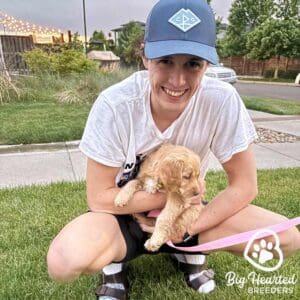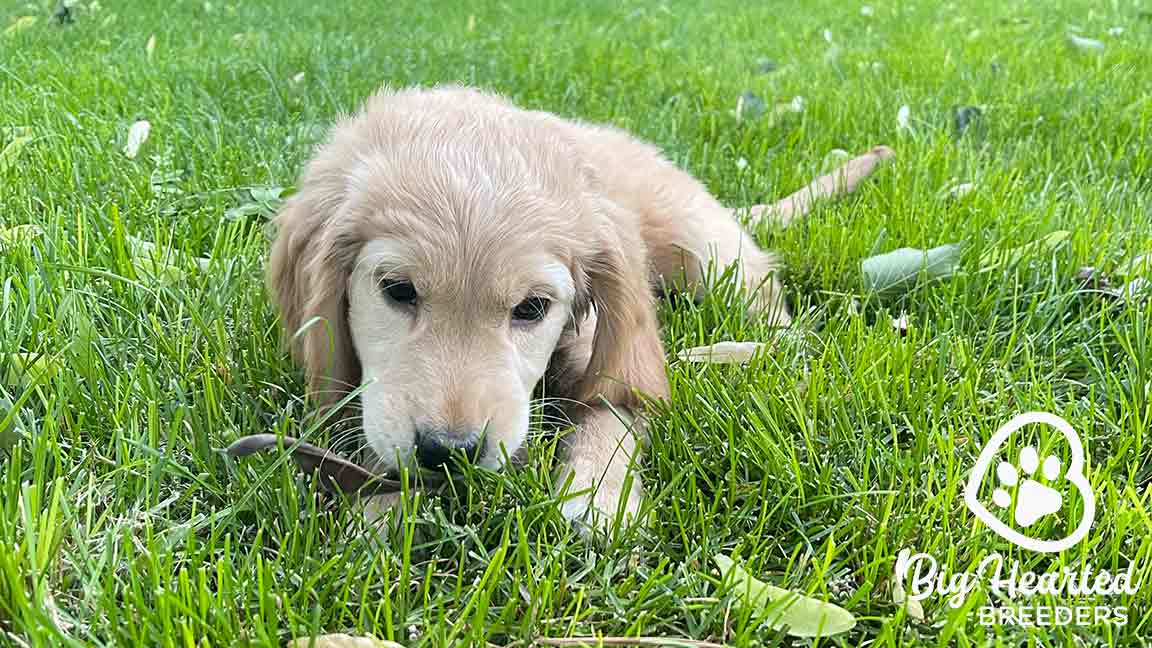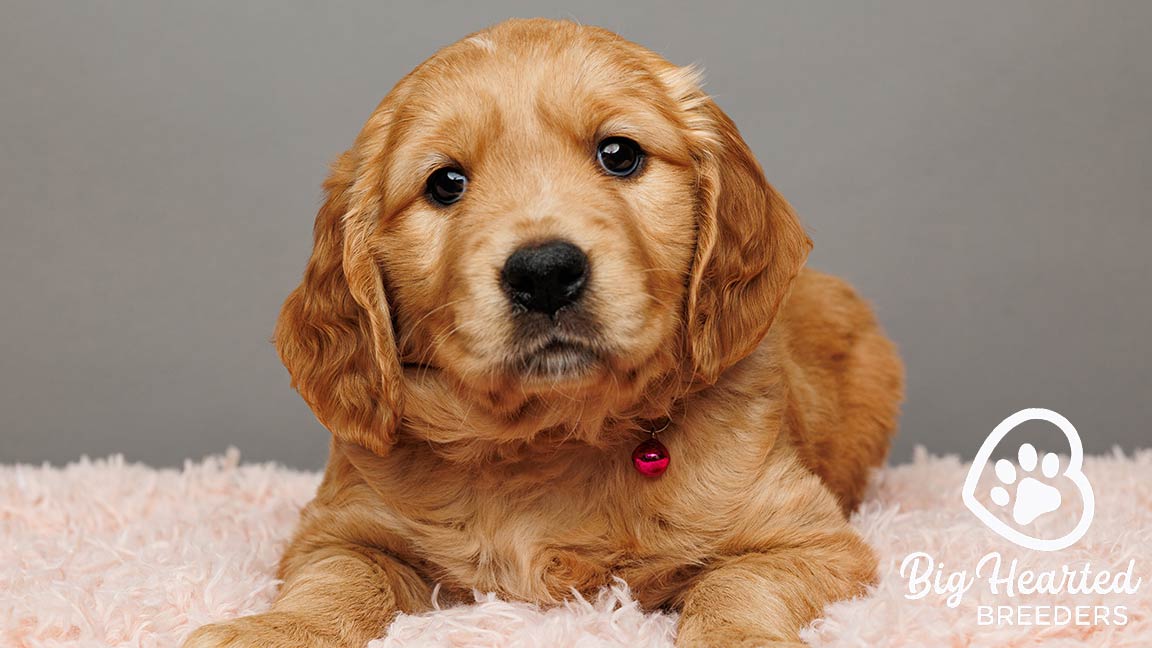Dog Anxiety Explained: Signs, Causes, and Calming Solutions
Dog Anxiety Explained: Signs, Causes, and Calming Solutions
If your dog has ever paced around the house during a thunderstorm or given you those big worried eyes when you head out the door, you are not alone. Dog anxiety is one of the most common behavioral challenges pet parents face. The good news is that with the right understanding, a little patience, and some playful problem-solving, you can help your pup feel safe and calm.
At Big Hearted Breeders, we believe that good breeding practices and early socialization give puppies the best start in life. Many behavior problems, including dog anxiety, can be reduced when puppies grow up in a loving environment that teaches them confidence from day one. Let’s dive into what dog anxiety looks like, what causes it, and the best ways to help your dog relax.
What Is Dog Anxiety?
Dog anxiety is a lot like human anxiety: it’s that restless, uneasy feeling that comes when a dog doesn’t know what’s going on or feels unsafe. Some pups experience it occasionally, like when they visit the vet, while others might feel it more often, like when left home alone. A little stress is normal, but when it becomes frequent or severe, it can affect your dog’s health and happiness.

Common Signs of Dog Anxiety
Dogs might not be able to tell us with words, but they have plenty of ways to show when they are feeling anxious. Look out for these classic signs:
- Excessive barking or whining
- Pacing or restlessness
- Destructive chewing or scratching
- Trembling or tucked tail
- Hiding or clinging to you like Velcro
- Accidents indoors even if house trained
Every dog is unique, but spotting these behaviors early helps you step in with comfort before the worry snowballs.
Causes of Dog Anxiety
Dog anxiety doesn’t come out of nowhere. Understanding the root cause is the first step in easing your pup’s nerves. Some common triggers include:

Separation Anxiety
Many dogs feel anxious when their favorite person leaves. It’s not that they don’t love a nap, they just miss you too much!
Loud Noises
Fireworks, thunderstorms, or even the vacuum cleaner can make some pups shake in their paws.
New Environments
Moving to a new home, meeting new people, or even a trip to the groomer can feel overwhelming.
Past Experiences
Dogs who weren’t socialized early or who had a rough start may feel more anxious in everyday situations. That’s why ethical breeders like Big Hearted Breeders focus on gentle handling and early exposure to normal household sounds and activities. These little lessons in puppyhood build resilience for life.
Calming Solutions for Dog Anxiety
The great news is that there are many simple, fun, and effective ways to ease your dog’s worries.

Create a Safe Space
Give your dog a cozy den-like spot where they can retreat when things feel scary. A crate with a soft blanket can be the perfect hideaway.
Exercise and Play
A tired dog is a happy dog! Daily walks, fetch, or tug-of-war not only burn energy but also reduce stress and boredom.
Training and Mental Stimulation
Positive reinforcement training builds confidence and strengthens your bond. Puzzle toys and sniffing games also give anxious minds something positive to focus on.
Stay Calm Yourself
Dogs are emotional sponges. If you stay relaxed, your dog is more likely to follow your lead.
Professional Support
Sometimes, extra help from a trainer or veterinarian is the best option. There are even calming supplements like pawTree’s Chillax™ small chews or therapies available for dogs with persistent anxiety.
Why Ethical Breeding Matters
At Big Hearted Breeders, we know that dog anxiety is less likely when puppies get the right foundation. From the earliest days, our puppies are handled with care, exposed to gentle sounds, and taught that the world is a safe place. This early socialization means they grow up confident, happy, and ready to face life with wagging tails. Ethical breeding isn’t just about health, it’s about nurturing temperament and emotional well-being, too.

Final Thoughts
Dog anxiety may sound daunting, but with understanding and the right approach, you can transform anxious behaviors into calm confidence. Remember, every dog has their own personality, and sometimes it just takes a little trial and error to find the perfect calming solution.
At the end of the day, your pup doesn’t want perfection, they just want you. And that wagging tail after you’ve helped them through a stressful moment? That’s proof of the beautiful bond you share.
FAQ
How can I tell if my dog has anxiety or is just being stubborn?
Look for patterns in behavior. Repeated signs like pacing, whining, trembling, or hiding suggest anxiety, especially if they appear during specific triggers like being left alone or hearing loud noises.
Can dog anxiety develop later in life?
Yes. Changes in environment, health issues, or traumatic experiences can trigger anxiety even in older dogs, so ongoing attention and care are important.
Are there breeds more prone to dog anxiety?
Some breeds are naturally more sensitive or alert, but every dog is unique. Early socialization, gentle handling, and positive experiences can reduce anxiety risk in any breed.
Do calming treats or supplements really work?
Some dogs respond well to natural calming aids, but results vary. They work best alongside training, socialization, and safe routines rather than as a sole solution.
When should I seek professional help?
If your dog’s anxiety is severe, causes injury, or affects their daily life, a certified trainer or veterinarian can recommend behavior modification techniques or other therapies.
Can early socialization really prevent dog anxiety?
Absolutely. Puppies exposed to gentle handling, different sounds, and new experiences in a positive way are more confident as adults. Ethical breeding practices that prioritize early socialization can reduce the likelihood of dog anxiety.





